A Chinese Portrait of Varanasi
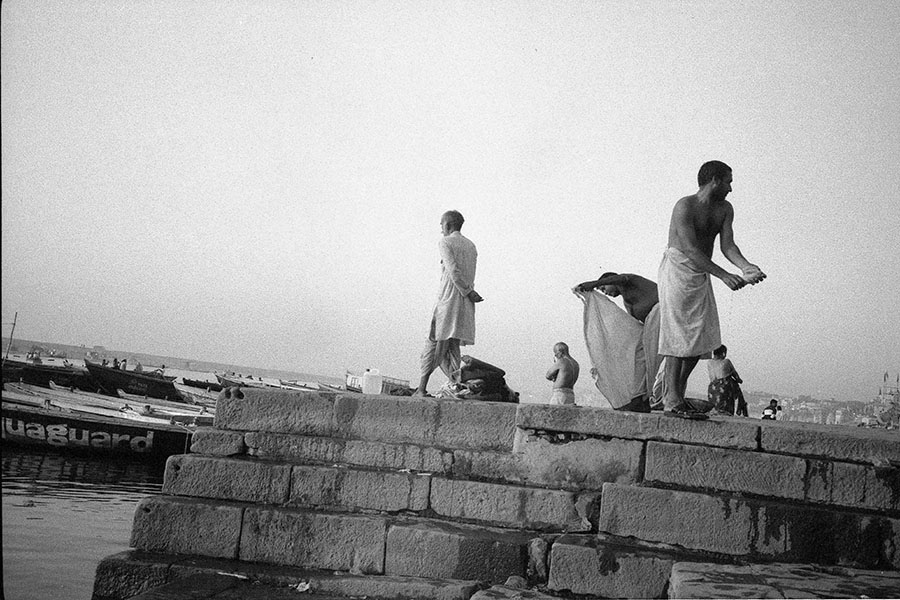
A world-famous holy land of India, Varanasi is where the majority of postcard images depicting Hindus bathing in the water of the Ganges River were taken. However, I didn’t sense much holiness on my way to the Indian city: dirty roads and villages, trains packed with passengers looking like refugees, and trucks galloping like beasts along the road. Local trucks looked strange, with their hoods painted with the faces of Indian deities and their bodies decorated with symbols and designs, as well as colorful ribbons, which made them appear like monsters in Indian masks. Drivers decorate the vehicles to dispel evil and avoid traffic incidents. Icons to exorcise evil spirits can be found everywhere in India. What is evil in the eyes of local people? Perhaps the evil can refer to certain modern inventions along with invisible ghosts.
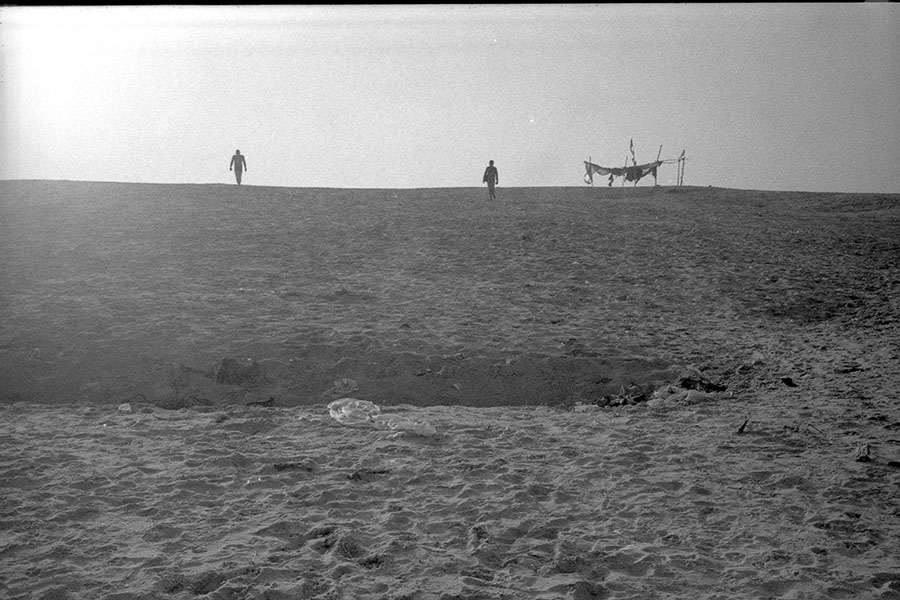
In the dry season, many rivers in India dry out, but the Ganges remains torrential and nurtures local residents.
When Varanasi drew near, the road suddenly became shrouded in a cloud of smoggy dirt, which seemed to form a “tunnel” extending five to six kilometers. Passing vehicles slowed down and cautiously navigated the “tunnel”. Then, the dirt cloud dispersed, and the Ganges emerged in my sight. The ancient, broad river glittered in the sun, while household waste piled like hills on the banks. The bus I took crossed an iron bridge over the Ganges and entered Varanasi.
Perhaps Varanasi is the most “honest” city in the world, lacking any disguise or pretension. There, establishments of all ages stand together: Modern skyscrapers decorated with glass mosaics and weathered stone-and-wood buildings set each other off, and a 2011 advertising poster hangs near a temple dating back to 1742. Monkeys and crows have coexisted in harmony with residents of the city for centuries. I saw a mother baptizing her baby in the Ganges and children dancing and flying kites atop the buildings.
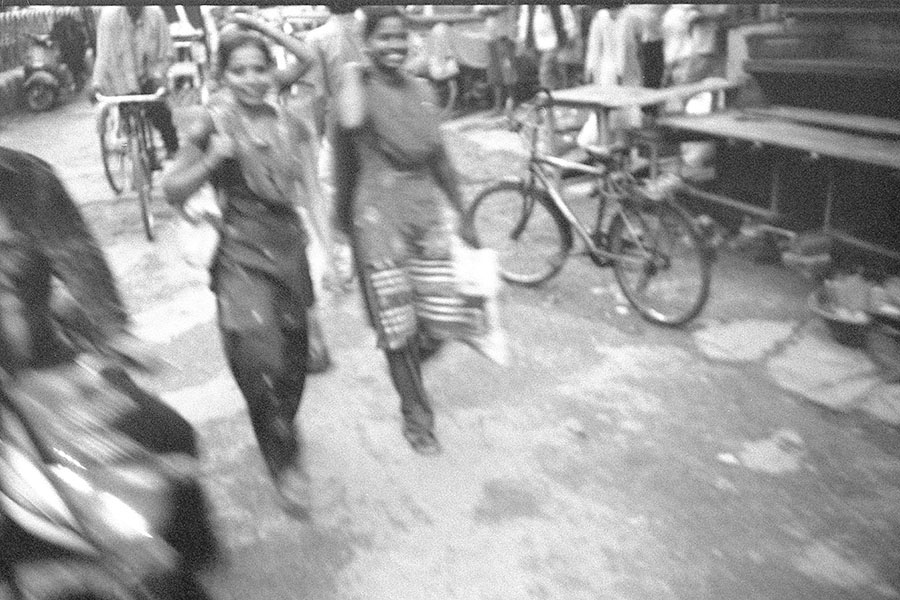
Varanasi has become a huge stage on which every pilgrim performs in an improvisational manner.
Varanasi creates a sense of eternal chaos. Rather than a city, it seems like a field or huge device, creating the illusion of the world as only a ferry carrying people from one shore to the other. Nothing is worth sticking, nothing is impregnable, and nothing is immortal. In fact, there is no “other shore” or paradise, but reincarnation. Even the supreme god needs to sleep for a while before waking up. While sleeping, the god falls into a spirit stage. When he awakes, the god reincarnates. In the river of time, even deities are something temporary and transient. Reincarnation is the only eternal thing in the world.
The Ganges flows through the lowest part of Varanasi.
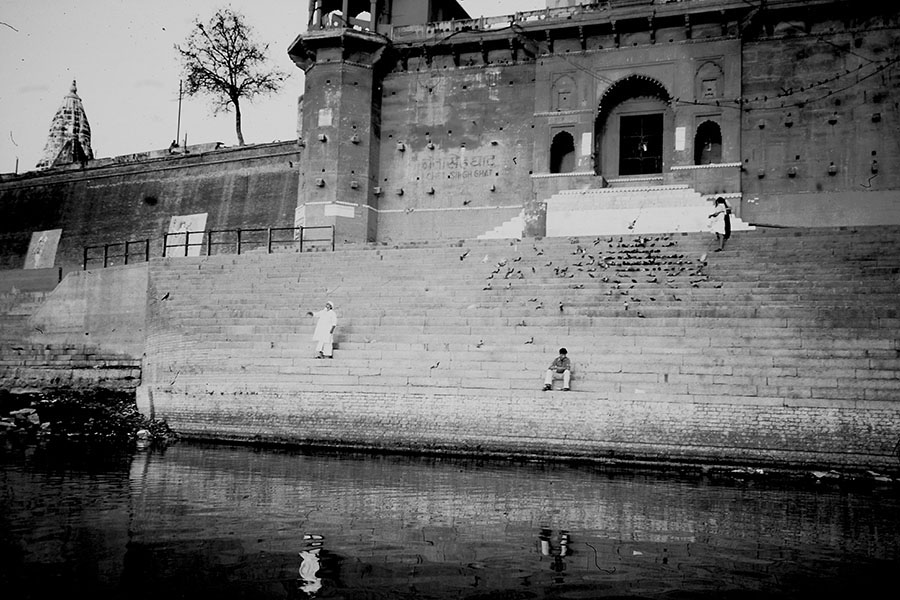
The city of Varanasi stretches for six to seven kilometers along the Ganges, on the banks of which are more than 70 stone stairs that allow people to reach the river.
At dawn, the river was enveloped by thin, blueish fog. Then, a carnival began. Hindu pilgrims paraded through every lane and street in Varanasi to reach the Ganges before sunrise. They must bathe in the river with the rising sun. With some flying banners, they played musical instruments and danced all the way to the Ganges, the final, holy destination of their procession. The procession seemed like a mountaineering expedition to Mount Qomolangma (called Mount Everest by the West), except without the heavy breathing due to the altitude. Pilgrims heading to the Ganges embraced the same piousness and excitement as mountaineers do the moment they almost reach the summit.
At that moment, Varanasi became a huge stage on which every pilgrim improvised a performance. They sang in joy or cried in sorrow as though they were insane. The pilgrimage rituals have been passed down from generation to generation. These parades had no organizers, and if there was one, it would be the Ganges. The parades were not only a carnival, but a flowing temple fair, a trade fair, an exposition, and an art festival.
Varanasi is an aggregation of numerous fragments, each bearing a pilgrim’s pursuit of self-perfection. There, all manifestations of life’s truths congregate in a single destination – the Ganges. The final destination of a pilgrimage to Varanasi isn’t a shrine or monument, but a river. No other river in the world is as respected as the Ganges. It seems that Varanasi is amidst a never-ending cleaning movement or festival. Day after day, it liberates people from stereotypical ideas, doctrines and rules, enabling them to experience innate joy. Thanks to its power, deities break free from statues in shrines to become living creatures of the mortal world.
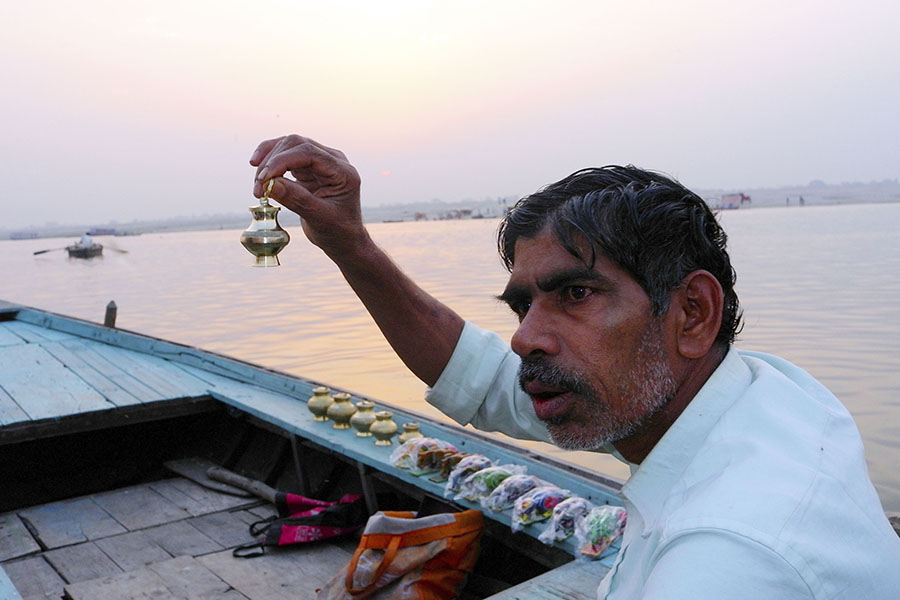
A peddler sells prayer lamps by the Ganges.
So it goes in the East, where the spiritual implications of Earth maintain the power to change the straight path of modernism. Globalization attempts to set universal rules around the world, but in the East, it has begun to grow branches like an untrimmed tree.
In the shadow of altars, many Hindus sit quietly in the darkness like statues of deities while watching the Ganges that has already become blurry. They have done so for generations.
(Excerpt from Yu Jian’s A Journey to India)
The writer, Yu Jian, a famous poet and writer in China, started to write poems, prose, novels, and essays in 1970. He began to engage in photography in 1980 and documentary production in 1992. His prose, A Journey to India, was awarded the Prize for Nonfictional Work by the magazine People’s Literature in 2012.
Published in the ISSUE 1 of CHINA-INDIA DIALOGUE
